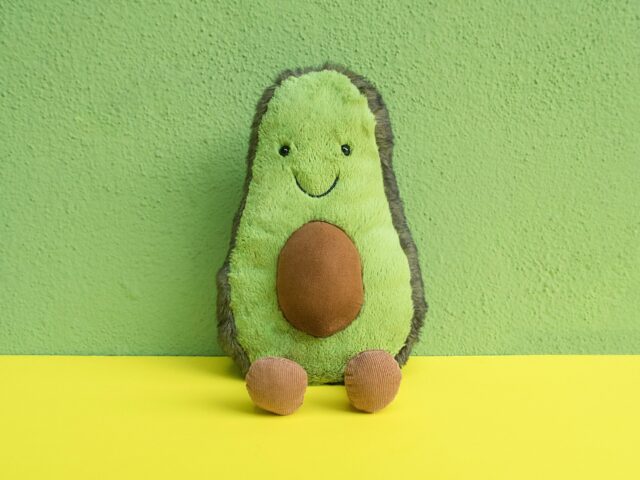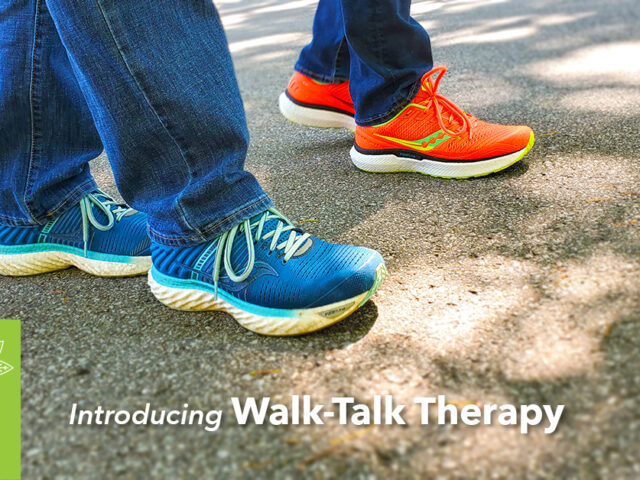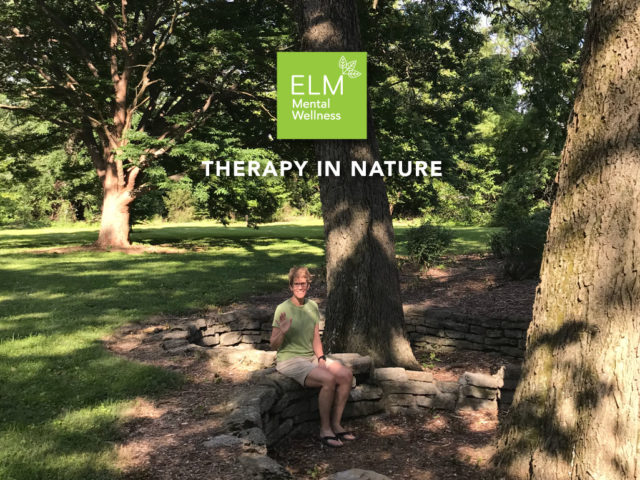


health, mental health, stress, therapy, Uncategorized, wellness
One Step At A Time
ELM Mental Wellness is continuously adjusting and adapting to our ever changing world. I am offering walk-and-talk therapy as an additional alternative to my current Telehealth therapy. Walk-talk is a mindfulness-based body oriented therapy that can make it easier for clients to relax, stop ruminating, release physical tension, breathe deep and receive mind-body insight while processing experiences in a different way. As the name describes, clients talk with me while walking outdoors rather than being online or sitting in a therapy office. Walking enables some clients to feel more comfortable when sharing in the therapy process. Additionally, receiving the feel-good brain chemical benefits of exercise, mindfulness practice and eco-psychology.
Walking side by side, we’ll discuss what comes to mind that day in the context of overall goals, just like sitting inside an office. At times we might take a few moments to stand in silent reflection, deep breathe or sit in guided visualization. By the end, you’ll have gained some understanding, let loose a little and noticed a helpful shift in your level of stress and anxiety. Walking is good for your physical and mental health, and in times like these, it’s more important than ever. My hope is the fresh air and sunshine will assist with clearing your mind and boosting your mood.
An outdoor consent form must be completed for the session to be conducted. If weather is uncooperative, all sessions will be automatically shifted to Telehealth. You will be notified that morning. We will meet at my office parking lot across from Lunken Airport to walk on safe paths in the area. Join me one step at a time.

stress, therapy
Nature Heals
Just a walk in the woods or a stroll by the beach on a sunny morning can awaken the innermost feelings of happiness and peace, and Environmental Psychology has gone a long way proving this fact (Bell, Fisher, Baum, Greene, 1996).
Our affinity toward nature is genetic and deep-rooted in evolution. For example, have you ever wondered why most people prefer to book accommodations that have a great view from the balcony or the terrace? Why patients who get a natural view from their hospital bed recover sooner than others? Or why does it happen that when stress takes a toll on our mind, we crave for time to figure out things amidst nature?
Frank Lloyd Wright had said, “Study Nature, love Nature, stay close to Nature. It will never fail you.”
Nature Improves Psychological Well-Being
- Nature helps in emotional regulation and improves memory functions. A study on the cognitive benefits of nature found that subjects who took a nature walk did better on a memory test than the subjects who walked down the urban streets (Berman, Jonides, Kaplan, 2008).
- Nature walks benefit people suffering from depression (Shern et al., 2014). Studies had shown that people suffering from mild to major depressive disorders showed significant mood upliftments when exposed to nature. Not only that, but they also felt more motivated and energized to recover and get back to normalcy (Berman, Kross, Kaplan, 2012).
- Recent investigations revealed that being outdoor reduces stress by lowering the stress hormone cortisol. Besides that, it also makes us immune to allied problems like hypertension and tachycardia (Lee J, 2011).
- Nature walks and other outdoor activities build attention and focus (Hartig, 1991). There are pieces of evidence that indicate strong environmental connections to be related to better performance, heightened concentration, and reduced chances of developing Attention Deficit Disorder.
- A study at the University of Kansas found that spending more time outdoors and less time with our electronic devices can increase our problem-solving skills and improve creative abilities.
The Importance of Nature to Well-Being
A 30-days campaign was run by the Wildlife Trusts of the University of Derby, with the prime focus on uncovering the crucial role nature plays in our overall eudaemonia. The study revealed that subjective feelings of happiness and wellbeing were positively correlated with natural activities such as gardening, animal feeding, bird watching, and bushwalking.
Dr. Miles Richardson, the face of this research, cited valuable evidence on how proximity to the nature improved mood, enhanced respiratory functioning, regulated hormonal malfunctions, and impacted on the thought structure of individuals as a whole.
Just by being outdoors and using all our senses to appreciate nature, we can be more mindful of the present, gain emotional resilience, and combat stress with more vitality.
We become naturally immune to anxiety, emotional ups and downs, and thought blocks, thereby feel more lively and energetic than before.
The survey further pointed that people who lived close to natural wilderness like the beach, mountains, or parklands, had better mental health and reported of falling sick lesser than those living in congested urban settings (Kuo and Coley, 2016).
Such families had fewer instances of domestic violence, said of feeling less fatigued, and showed increased productivity at the professional front
5 Ways to Apply the Positive Effects of Nature in Our Life
1. Walk more
We know walking is good for the heart, muscles, and the overall metabolism rate. And now scientists have proved that walking in the natural environment improves our emotional health too.
A study conducted and published by Stanford University, California revealed that participants who walked in the green parklands showed increased attention and focus, more so than participants who walked in closed urban settings or on a treadmill.
Not only that, but the former group also showed less engagement in negative thinking and felt more confident about themselves than the other group.
2. Keep a nature journal
A nature journal is a creative and unique way of imbibing the positive vibes of nature into our everyday lives. Many people who encourage this habit express feelings of inner peace and joy. In a nature journal, we can collect and note everything about our encounters with the outer world.
For example, after a walk by the beach on a cloudy evening, we can sketch some clouds in the journal or draw the sea and write how we felt when we were walking through the breezy shore. Many people collect small things like a pebble, flowers, feathers, or leaves, and glue them in the nature journal with their thoughts poured into it. A great way to spend some quality ‘me-time,’ nature journaling inevitably brings a part of nature in our usual lives.
3. Spend some working hours outside
Most working professionals today have the flexibility to access daily tasks outside (thanks to technology). We can choose to spend a part of our working day out to avoid the monotony of the cubicle and the same old office space.
It may be one conference in the garden or lunch at the local park, anything that can logically amalgamates with nature. Spending some time outside alone or with co-workers gives an instant boost of freshness to the mind, thereby reducing the stress and frustration that comes from working tonelessly for hours at a stretch.
4. Plant at home
Growing plants at home not just add aesthetic beauty to your space, it also contributes to purifying the air you breathe in.
Having plants at home balances and soothes the home ambiance and aids in respiration and breathing. Studies have proved that indoor plants or a garden are beneficial for the mental health of the people who live there. They help in improving sensory awareness, cognitive functions, and enhances focus.
Indoor plants reconnect us to nature, please our senses, and brings a serene feeling when we stay close to them.
5. Balance the diet with more natural elements
Diet is undoubtedly a great way of establishing a strong connection to Mother Nature. By consuming more plant-based proteins, vitamins, and minerals, we can help our body maintain its optimal state of functioning and homeostasis level.
Recent healthcare research proved that the consumption of plant-based protein is correlated to lower mortality rates as opposed to animal-based proteins. It is not a bad idea, after all, to replace meat with vegetables and grains – if that brings good health and long life to us!
A Take-Home Message:
“All the trees are losing their leaves, and not one of them is worried”
Donald Miller

health, mental health, relationships, self care, stress, wellness
What a FREE Hug can do
Why does our brain needs at least 8 hugs a day: Hugging is a particularly intimate and intense way to express emotions. Through a hug we can convey joy or sorrow, we can say to a person that can count on us unconditionally and understand his state of mind without speaking. But the fact is that embraces not only help us connect with others and express what we feel, also have a very positive effect on the emotional balance and brain health.
What happens when someone hugs us? When someone hugs us, the physical contact activates the pressure receptors that we have in our skin, which are also known as Pacinian corpuscles, and respond mainly to deep pressure. These receptors immediately send signals to the vagus nerve. At that point, we begin to feel good because that nerve is connected with nerve fibers that reach different cranial nerves and play an important role in the regulation of most of the key functions of the body, including blood pressure. Therefore, as a result of a hug and vagus nerve stimulation, the heart rate and blood pressure decrease. Actually, the vagus nerve plays an important role in the parasympathetic system, which represents a kind of handbrake when we are under stress or overexcited.
Another important change takes place directly in the brain. A hug stimulates the production of dopamine, a neurotransmitter known as the “pleasure’s hormone” because it creates a feeling of satisfaction that relieves stress and tension. It is also appreciated that a simple hug increases the production of oxytocin, known as the “love’s hormone” which allows us to emotionally connect with others and trust them. And the most important fact is that the effects of a hug are immediate. A study conducted at the Advanced Telecommunications Research Institute International in Kyoto organized a conversation of about 15 minutes between some people and their partners. After, some of them received a hug and some not. Assessing the physiological parameters, the researchers appreciated that those who received the hug showed a significant reduction in the level of cortisol in blood, the stress hormone that causes so much damage.
Hugs help us feel good about ourselves: It was found that a hug, or a loving caress, affect the brain’s ability to imagine the body, even in adults. This kind of physical contact is also essential to develop and maintain an adequate perception of our body. According to a study conducted at the University College London, the key lies in the fact that this type of body contact offers pleasant tactile sensations that generate a series of proprioceptive signals, that help us feel better about our bodies. In practice, a touch or a hug, don’t send only the proprioceptive signals to our brain that allow us to be more aware of our bodies, but also say to it that we are worthy of being loved. And these feelings make us feel very good. In fact, according to these researchers, the lack of hugs and caresses could be a triggering or aggravating factor of body image disorders such as anorexia and bulimia.
How many hugs we need every day? Actually we could live without hugs, but it would be like dying slowly, a little every day. About this, family therapist Virginia Satir said: “We need four hugs a day to survive, eight hugs to keep us as we are and 12 hugs to grow”. In fact, during a study conducted by researchers at UCLA it were scanned the brains of participants while they were subjected to electric shocks. Their partners accompanied them during the test and, in some cases, were allowed to hold their hands. Thus it was found that physical contact was helping to deal with the stress of the experience and that in these cases were activated brain areas responsible for mitigating fear. These studies show that hugs have a very powerful effect on our brains and help us achieve a state of relaxation and comfort, while allowing us to better deal with stress and fear. Therefore, even if not 8, you still need to guarantee you a daily dose of hugs.
Sources: Sumioka, H. et. Al. (2013) Huggable communication medium decreases cortisol levels. Nature; 3: 3024. Crucianelli, L. et. Al. (2013) Bodily Pleasure Matters: Velocity of Touch Modulates Body Ownership During the Rubber Hand Illusion. Frontiers in Psychology; 4: 703. Inagaki, T. K. & Eisenberger, N. I. (2012) Neural correlates of giving support to a loved one. Psychosom Med; 74(1): 3-7. Holt-Lunstad, J. et. Al. (2008) Influence of a “warm touch” support enhancement intervention among married couples on ambulatory blood pressure, oxytocin, alpha amylase, and cortisol. Psychosom. Med; 70: 976–985.

spiritual wellness, Uncategorized
How we can contribute to our environment and community to build better living spaces.
INSPIRING ACTION To start integrating sustainability efforts, join forces. Many organizations have a task force overseeing and implementing reduce/reuse/recycle strategies. Team up to share ideas, expand reach, and amplify efforts with consistent messaging. If there isn’t a green team — which may be housed under the umbrella of corporate social responsibility, launch one.
Reaching the Hard to Reach
Concerned about reactions from people who don’t understand or believe the facts? A report by the Center for Research on Environmental Decisions (CRED) at Columbia University states the most effective approach is to frame sustainable living messages in terms of personal benefits like having clean air and water, being healthier, and saving money. Learn more: connectingonclimate.org.
Meanwhile, here’s a way to press the easy button and start influencing change: Add trackable sustainability activities to your next well-being challenge; come up with your own to match workforce needs and interests. Before long, participants will expect to see earth-friendly activities alongside step tracking and medita¬tion as habits equally vital to well-being.
A few examples:
• Slash use of plastics/disposables. People can pack their own bamboo, metal, or other reusable utensils, dishes, and straws. Reusable grocery bags, cloth napkins, and washable paper towel alternatives eliminate a lot of household waste. And food storage is a cinch with glass containers, silicone bags, and wax-coated cloth wraps.
• Shrink your carbon footprint. Share a tool like the EPA’s Carbon Footprint Calculator (epa.gov/carbon-footprint-calculator); challenge participants and their families to make everyday choices that reduce carbon output.
• Get outside and play. When people spend time enjoying nature — from hiking in a national park to fishing and camping with their families — they’re more likely to have a heart for protecting it. Time in natural surroundings also offers unique physical and mental health benefits. Learn more in The Nature Fix by Florence Williams and A Healthy Dose of Nature Is Good for Business — Promoting Green Exercise for Employee Well-Being (hesonline.com/white-papers).
• Use alternative transportation. Distribute bike commuting details and discounted or free passes to make public transit benefits evident and linked to your wellness program.
“When people spend time enjoying nature — from hiking in a national park to fishing and camping with their families — they’re more likely to have a heart for protecting it.”
RESOURCES
• Act on Climate Change Yale Program on Climate Change Communication: climatecommunication.yale.edu/news-events/act-on-climate-change
• Tips to Use Less Plastic Green Education Foundation greeneducationfoundation.org/nationalgreenweeksub/waste-reduction-tips/tips-to-use-less-plastic.html
• Top 20 Ways to Reduce Your Carbon Footprint GlobalStewards.org globalstewards.org/reduce-carbon-footprint.htm
